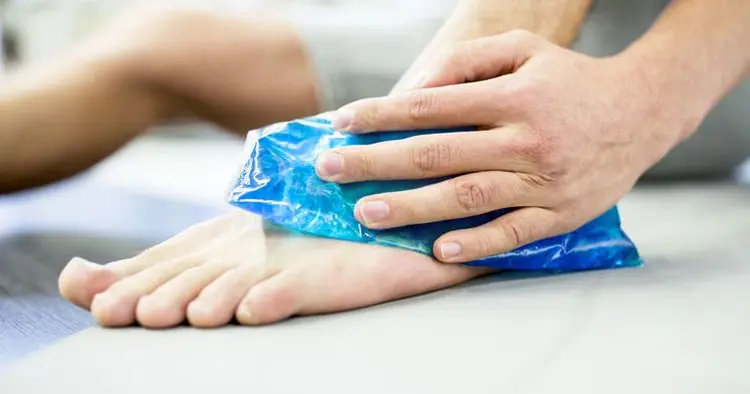Sports Injuries and Management
RICE A Classic Recipe For Sports Injuries
Acute Management For Sprains And Strains
Minor acute injuries such as a sprained ankle or a pulled hamstring are commonly managed using the RICE method at home in the initial stages. RICE has classically been a go to first aid approach for minor sporting injuries where the goal is to ease pain, reduce swelling and accelerate the healing process ultimately allowing for a quicker return to play. Self administering treatment with out medical opinion is often fraught with danger so as always if the condition appears to be worsening, or fails to make rapid progress in the first day or two then seeking medial assessment is always advised. Although there is some recent debate over the effectiveness with regard to the RICE method for the management of sprains and strains, it is a relatively safe approach for many minor injuries. Personally I still regularly prescribe a individually tailored version of the RICE method to many of my patients for managing symptoms associated with acute sprains and strains such as pain and swelling in the early stages post-injury.
The classic RICE method consists of the following steps:
Ideally as soon as possible after suffering an injury like a sprain or a strain then R.I.C.E. which stands for Rest, Ice, Compression, and Elevation would be engaged. The use of such an approach is applied in an attempt to prevent further damage to tissues, relieve pain, manage swelling and promote a situation for healing to begin. Although relatively self explanatory these days, each of the stages are explained in some more detail below.
- Rest: The goal of rest within the RICE method is to protect the injured area, removing it from any situation or activity that has potential to cause further damage to the injured tissue, or delay recovery.
- Ice: The use of ice is prescribed in an attempt to assist in controlling swelling and help reduce any associated pain. Classically with RICE this icing of the affected area is carried out multiple times a day for up to a few days post injury. Typically with ice application being around 10 to 20 minutes per-session.
Noting that to reduce the risk of damage to the skin avoid applying any ice (or heat for that matter) directly to the skin and always place a absorbent towel as a protective layer around the ice pack before applying it to the injury site. - Compression: Compression is used in an attempt to help control, or decrease the presence of any swelling associated with the injury and in doing so can assist in pain management with acute sprains and strains.
With the use of compression avoid compressing the area too tightly, signs your compression may be too tight include increased pain, significant swelling below or above the level of the bandage, as well as other sensations like tingling or numbness that weren’t there prior to the application of compression. - Elevation: The application of elevation should be to raise the body part above the level of the heart and by doing so this as with ice and compression can assist in alleviating swelling and swelling associated pain.
At Sydney Physio Clinic our physio team have had significant experience in dealing with all sorts of sprains and strains of different body parts and severity. Regardless of the severity and stage of injury we look forward to being involved in your rehabilitation process and helping you get back on the field or back to your best as soon and safely as possible.
Disclaimer: Sydney Physio Clinic does not endorse any treatments, procedures, products mentioned. This information is provided as an educational service and is not intended to serve as medical advice. Anyone seeking specific advice or assistance on RICE A Classic Recipe For Sports Injuries should consult his or her general practitioner, physiotherapist or otherwise appropriately skilled practitioner.


